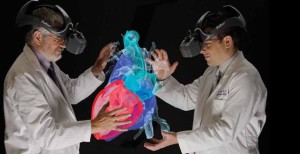biomedical image processing training in pune

- Fundamentals of MATLAB
- Imaging Modalities
- Image Guided Therapy
- Image Enhancement
- Image Registration
- Image Segmentation
- Feature Extraction
- Feature Classification
- Large data Handling
- Image reconstruction
- 3D visualization
Why learn biomedical image processing ?
The major strength in the application of computers to medical imaging lies in the use of image processing techniques for quantitative analysis. Medical images are primarily visual in nature; however, visual analysis by human observers is usually associated with limitations caused by interobserver variations and errors due to fatigue, distractions, and limited experience. While the interpretation of an image by an expert draws from his/her experience and expertise, there is almost always a subjective element. Computer analysis, if performed with the appropriate care and logic, can potentially add objective strength to the interpretation of the expert. Thus,it becomes possible to improve the diagnostic accuracy and confidence of even an expert with
many years of experience.
Imaging science has expanded primarily along three distinct but related lines of investigation:
- segmentation
- registration and
- visualization
Segmentation, particularly in three dimensions, remains the holy grail of imaging science. It is the important yet elusive capability to accurately recognize and delineate all the individual objects in an image scene.

Advances in image acquisition technology, computer vision systems, and new clinical/research queries are leading to increasing amounts of quantitative data being derived from medical images. Imaging modalities such as computed tomography (CT) and magnetic resonance are generating large volumes of image data. However, there are many more images to read, placing a great burden on radiologists in terms of reading time and leading to the potential for missing factors. The increase in the amount of image data to be interpreted causes a common problem throughout medical imaging systems, and therefore, there is great research and commercial interest in computer systems to process the data. The various image processing techniques such as neural network and genetic algorithms form a computer aided diagnosis system is increasingly used in clinical practice to assist physicians in the detection of subtle abnormalities which can be used by a radiologist.
